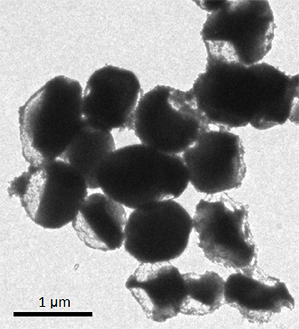Nanostructures Boost Battery Life Fivefold
Some of the most promising battery chemistries—which, in theory, could store several times more energy than today’s lithium-ion batteries and cost much less—have a fatal flaw. They can’t be recharged very often before they stop working, making them useless for applications such as electric vehicles. Now researchers at Stanford have created novel nanostructures that greatly increase the number of times one of these chemistries can be recharged, even to levels high enough for many commercial applications.

Whereas previous research reports have celebrated the ability to recharge a lithium-sulfur battery 150 times, the Stanford researchers recharged their battery 1,000 times and still retained substantial energy storage capacity. In some electric vehicle configurations, that would be enough to last several years. Commercial versions of the batteries could approximately double battery storage compared to lithium-ion batteries, says Yi Cui, a professor of materials science and engineering at Stanford. The batteries retained 81 percent of their capacity after 500 cycles and 67 percent after 1,000 cycles. Cui says that the nanomaterials can be made with simple methods that lend themselves to high-volume manufacturing.
The nanostructures address two problems with previous lithium-sulfur batteries. When lithium-sulfur batteries are discharged, sulfur combines with lithium to form lithium sulfide, and when it’s charged, sulfur forms again. But the reaction isn’t direct. A number of intermediate compounds called polysulfides are formed. If these polysulfides migrate out of an electrode, the reactions aren’t completed, which limits the amount of energy the battery can store. Over several recharging cycles, these intermediate products accumulate, reducing battery capacity more.
Several researchers have demonstrated that various nanostructures can help trap the polysulfides within an electrode, but these designs run up against a second problem with lithium-sulfur batteries. The sulfur swells and can damage the nanostructures, allowing the polysulfides to escape.
The researchers started by making spherical nanoparticles of sulfur and coating them with a titanium-oxide shell that’s designed to trap the polysulfides to keep them from migrating out of an electrode. They then dissolved part of the sulfur, creating space inside the shell. That space gives the sulfur room to expand without cracking the titanium-oxide shell.
While the material may be good enough for some applications, electric vehicle batteries would ideally retain 80 percent of their capacity for as many as 3,000 charging cycles, which would allow complete recharges almost every day for the life of a car, so the researchers are continuing to look for ways to increase the number of charges and total energy storage capacity.
The group, which published its results today in Nature Communications, is also working to address safety concerns with the lithium metal used in the batteries. (Cui is also developing a related battery chemistry—lithium sulfide—that avoids the use of lithium metal. See “Two Advances Point Toward a Cheaper Electric Car Battery.”) “There’s a lot of research and optimization that still needs to be done,” Cui says.
Keep Reading
Most Popular
Large language models can do jaw-dropping things. But nobody knows exactly why.
And that's a problem. Figuring it out is one of the biggest scientific puzzles of our time and a crucial step towards controlling more powerful future models.
The problem with plug-in hybrids? Their drivers.
Plug-in hybrids are often sold as a transition to EVs, but new data from Europe shows we’re still underestimating the emissions they produce.
How scientists traced a mysterious covid case back to six toilets
When wastewater surveillance turns into a hunt for a single infected individual, the ethics get tricky.
Google DeepMind’s new generative model makes Super Mario–like games from scratch
Genie learns how to control games by watching hours and hours of video. It could help train next-gen robots too.
Stay connected
Get the latest updates from
MIT Technology Review
Discover special offers, top stories, upcoming events, and more.